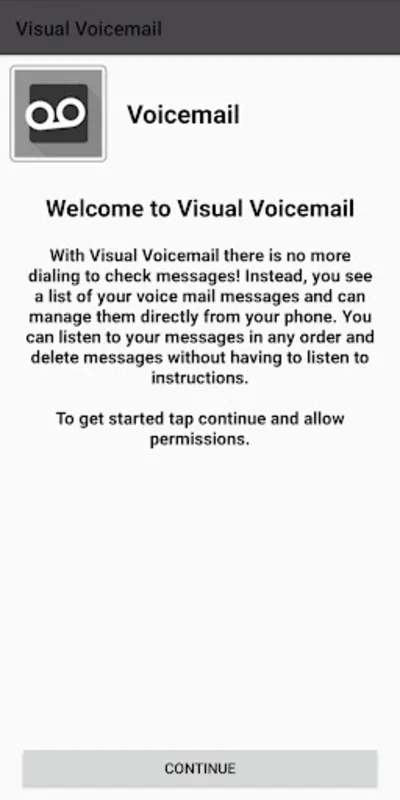Visual Voicemail App Introduction
Introduction
Visual Voicemail has emerged as a game - changer in the realm of voicemail management, especially for Android users. It offers a seamless and efficient way to handle voicemails, eliminating the traditional hassles associated with this form of communication.
The Advantages of Visual Voicemail
Ease of Access
One of the primary benefits of Visual Voicemail is the effortless access it provides. Messages are delivered directly to the Android device, making it as convenient as checking emails. There is no need to dial into a voicemail system or remember passwords. Users can simply open the app and access their messages. This is a significant improvement over the old - fashioned way of retrieving voicemails, which often involved cumbersome procedures.
Message Organization
Visual Voicemail allows for excellent message organization. Users can listen to messages in any order they prefer. This flexibility is crucial, especially when dealing with multiple voicemails. It also enables efficient inbox searching, so finding a specific message becomes a breeze. Additionally, the ability to keep all messages on the device means that important voicemails are always at hand, even during phone upgrades.
Customization Options
The app offers customization features that enhance the user experience. For instance, users can personalize their greetings. This not only adds a personal touch but also leaves a positive impression on callers. It gives users a sense of ownership over their voicemail, making it more than just a passive communication tool.
Compatibility and Support
Visual Voicemail is designed to work smoothly on Android devices running Android 8.0 OS or higher. It is also supported by carriers such as DISH and Boost Mobile. However, it's important to note that standard messaging and data rates may apply. This ensures that users can enjoy the benefits of the app without any major disruptions.
Voicemail Management Features
Backup and Restore
Visual Voicemail provides the crucial functionality of backing up and restoring voicemail messages. This is a great relief for users who are worried about losing their important voicemails. Whether it's due to a device malfunction or accidental deletion, having the ability to restore messages gives users peace of mind.
Transferring Messages
Another useful feature is the ability to transfer voicemail messages between devices. This is extremely convenient for users who use multiple Android devices, such as a smartphone and a tablet. It allows for seamless communication across different devices, ensuring that the user never misses an important voicemail.
Comparison with Traditional Voicemail
Traditional voicemail systems often require users to call a specific number, enter a password, and then listen to messages in a sequential order. This can be time - consuming and inconvenient, especially when users are in a hurry or have multiple voicemails to check. Visual Voicemail, on the other hand, offers a more modern and user - friendly approach. It gives users more control over their voicemails, allowing them to manage their messages in a way that suits their needs.
The Future of Visual Voicemail
As technology continues to evolve, Visual Voicemail is likely to become even more advanced. We can expect to see features such as enhanced voice - to - text conversion, improved search algorithms, and even more seamless integration with other communication apps. This will further enhance the user experience and make Visual Voicemail an indispensable tool for Android users.
Conclusion
Visual Voicemail has transformed the way Android users manage their voicemails. With its user - friendly features, customization options, and efficient management capabilities, it has become an essential app for those who rely on voicemail for communication. Whether it's for personal or business use, Visual Voicemail offers a superior voicemail experience that is both convenient and reliable.




